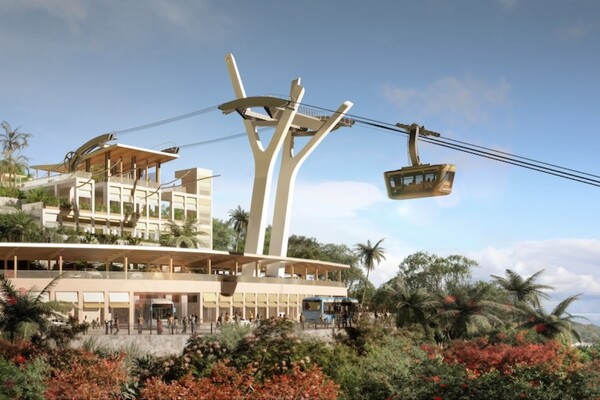Wastewater Infrastructure Deficiencies in St. Tammany Parish: A Report on Public Health and Sustainable Development Goals
Executive Summary
Residents in St. Tammany Parish, Louisiana, have reported long-standing issues with decentralized wastewater treatment systems, including foul odors and raw sewage discharge. These infrastructure failures present significant public health risks and represent a critical lapse in meeting key United Nations Sustainable Development Goals (SDGs), particularly SDG 6 (Clean Water and Sanitation) and SDG 3 (Good Health and Well-being). Despite official acknowledgment of the problems, severe budgetary constraints have hindered necessary upgrades, prompting a search for long-term, sustainable solutions.
Analysis of Current Situation and SDG Implications
The core issue stems from numerous small-scale, aging wastewater treatment systems built to serve individual subdivisions. This contrasts with the large municipal systems in neighboring parishes. The operational failures of these systems directly contravene several SDGs.
- SDG 6: Clean Water and Sanitation: The primary goal impacted is the provision of safe and sustainable sanitation. Reports of raw sewage spilling into neighborhood drainage ditches indicate a failure to safely manage wastewater, polluting local waterways and posing a direct threat to environmental health.
- SDG 3: Good Health and Well-being: The presence of raw sewage and persistent noxious odors creates a significant public health risk. Exposure to untreated wastewater can lead to the spread of waterborne diseases, directly undermining the goal of ensuring healthy lives for all community members.
- SDG 11: Sustainable Cities and Communities: The ongoing sanitation crisis degrades the quality of life for residents and renders communities unsafe and unsustainable. A fundamental component of a sustainable community is access to basic services, including reliable and effective sanitation infrastructure.
- SDG 9: Industry, Innovation, and Infrastructure: The parish’s wastewater facilities represent aging, non-resilient infrastructure. The lack of investment in maintenance and modernization, as evidenced by a plant with walls at risk of collapse, highlights a failure to build and maintain the reliable infrastructure necessary for community development.
Key Challenges
Parish officials have identified several major obstacles to addressing the failing wastewater systems and aligning with SDG targets.
- Severe Financial Constraints: The St. Tammany Utilities capital improvement budget is currently zero, leaving no dedicated funds for major repairs or system replacements.
- Prioritization of Acute Safety Risks: Limited resources are allocated to the most immediate public safety threats, such as structurally unsound facilities, leaving chronic issues like leaks and odors unaddressed.
- Scale of the Problem: With over 300 lift stations located in residential areas, the scope of necessary repairs is extensive and costly. A single system repair has already cost $300,000, with complete long-term repairs estimated at over $1 million for that unit alone.
Recommendations and Path Forward
To achieve long-term sustainability and meet public health obligations, the Parish Council is considering a multi-pronged approach focused on strategic planning and financial mobilization.
- Secure New Funding Sources: A formal request has been made for the parish president to actively seek federal and state grants and explore new revenue streams. This aligns with SDG 17 (Partnerships for the Goals), leveraging external partnerships to fund critical infrastructure projects.
- Strategic Assessment: The engagement of a consultant is proposed to conduct a comprehensive needs assessment. This will allow for the prioritization of projects based on public health impact and system vulnerability, creating a strategic roadmap for infrastructure investment.
- Long-Term Capital Planning: Developing a sustainable, long-term capital improvement plan is essential to move from reactive repairs to proactive modernization, ensuring the parish can meet its commitments to SDG 6 and SDG 11 for all residents.
SDGs Addressed in the Article
SDG 3: Good Health and Well-being
- The article highlights a significant “public health risk” posed by malfunctioning sewer systems. The presence of “raw sewage” in drainage ditches and the pervasive “stench” from treatment facilities can lead to the spread of diseases and affect the respiratory and overall well-being of the residents.
SDG 6: Clean Water and Sanitation
- This is the central theme of the article. It details the failure of wastewater treatment systems in St. Tammany Parish, leading to inadequate sanitation for residents. The text describes how system malfunctions cause “sewage to pour into neighborhood drainage ditches,” directly contaminating the local environment and water channels.
SDG 9: Industry, Innovation and Infrastructure
- The article discusses the poor state of essential infrastructure. The wastewater treatment facilities are described as substandard, with one plant being so unsafe that “the walls may cave in.” The lack of a “capital improvement budget” (“zero dollars”) underscores the challenge of developing and maintaining reliable and resilient infrastructure.
SDG 11: Sustainable Cities and Communities
- The issues described affect the quality of life and sustainability of communities like Mandeville. The failure to manage municipal wastewater effectively represents a failure in providing basic services. This leads to environmental degradation within residential areas, as evidenced by “sewer smells and raw sewage running in neighborhood drainage ditches.”
Specific SDG Targets Identified
Targets under SDG 6: Clean Water and Sanitation
-
Target 6.2: By 2030, achieve access to adequate and equitable sanitation and hygiene for all.
- The article demonstrates a lack of “adequate” sanitation. Residents are dealing with systems that “often malfunction,” leading to conditions where they must live with a constant “stench” and overflowing sewage, which is neither adequate nor safe.
-
Target 6.3: By 2030, improve water quality by reducing pollution… halving the proportion of untreated wastewater.
- The repeated mention of “raw sewage for a number of days spilling out” into drainage ditches is a clear example of untreated wastewater being released into the environment, which directly contradicts the goal of reducing water pollution.
Targets under SDG 3: Good Health and Well-being
-
Target 3.9: By 2030, substantially reduce the number of deaths and illnesses from hazardous chemicals and air, water and soil pollution and contamination.
- The situation is explicitly called a “public health risk.” The release of raw sewage contaminates local water and soil, while the foul odors (“smell complaints come in on a daily basis”) represent air pollution, all of which can lead to illnesses.
Targets under SDG 11: Sustainable Cities and Communities
-
Target 11.1: By 2030, ensure access for all to adequate, safe and affordable housing and basic services.
- Functioning wastewater treatment is a basic service. The article shows this service is failing for residents of communities like Tall Timbers, making their living conditions inadequate and unsafe.
-
Target 11.6: By 2030, reduce the adverse per capita environmental impact of cities, including by paying special attention to air quality and municipal and other waste management.
- The article is a case study of the adverse environmental impact of poor municipal waste management. The “stench” affects air quality, and the sewage spills directly pollute the local urban environment.
Targets under SDG 9: Industry, Innovation and Infrastructure
-
Target 9.1: Develop quality, reliable, sustainable and resilient infrastructure… to support human well-being.
- The wastewater infrastructure in St. Tammany Parish is depicted as unreliable (“often malfunction”), unsustainable (due to a “zero dollars” capital budget), and not resilient. One plant is so dilapidated that workers cannot enter it because “the walls may cave in,” showing a clear failure to maintain quality infrastructure.
Indicators for Measuring Progress
Implied Indicators
- Indicator related to Target 6.3 (specifically 6.3.1: Proportion of wastewater safely treated): The article implies this proportion is low. The descriptions of “raw sewage… spilling out into” drainage ditches serve as a direct, qualitative measure of wastewater that is not being safely treated. The number of such incidents could be tracked as an indicator.
- Indicator related to Target 11.6 and 3.9: The number of resident complaints about odors (“Smell complaints come in on a daily basis”) serves as a direct indicator of negative environmental impact and public health concerns. Tracking the frequency and location of these complaints can measure the extent of the problem and any progress in mitigating it.
- Indicator related to Target 9.1: The amount of funding allocated to infrastructure repair and upgrades is a key indicator. The article states there are “zero dollars in our capital improvement budget.” An increase in this budget, whether from grants or new revenue, would be a clear indicator of progress towards developing more reliable infrastructure.
Summary Table of SDGs, Targets, and Indicators
| SDGs | Targets | Indicators (Mentioned or Implied in Article) |
|---|---|---|
| SDG 6: Clean Water and Sanitation |
6.2: Achieve access to adequate and equitable sanitation. 6.3: Improve water quality by reducing pollution and untreated wastewater. |
Reports of “raw sewage… spilling out,” indicating untreated wastewater (relates to Indicator 6.3.1). |
| SDG 3: Good Health and Well-being | 3.9: Substantially reduce illnesses from water and air pollution. | The problem being labeled a “public health risk”; daily “smell complaints.” |
| SDG 11: Sustainable Cities and Communities |
11.1: Ensure access to basic services. 11.6: Reduce the adverse environmental impact of cities (waste management). |
Frequency of system malfunctions; number of neighborhoods affected by sewage spills and odors. |
| SDG 9: Industry, Innovation and Infrastructure | 9.1: Develop quality, reliable, sustainable and resilient infrastructure. | The “zero dollars” in the capital improvement budget; number of facilities deemed unsafe for workers. |
Source: fox8live.com







